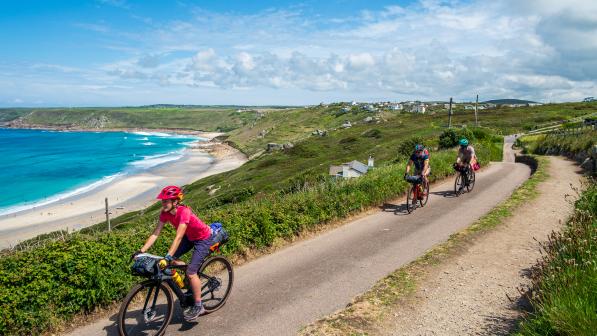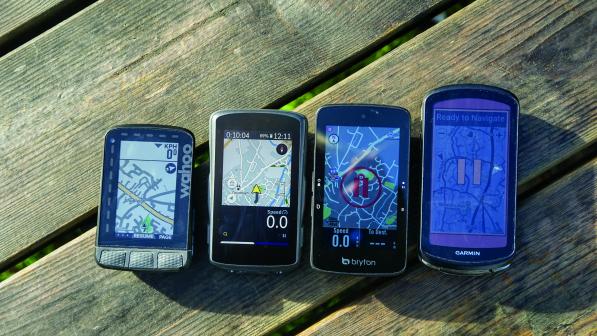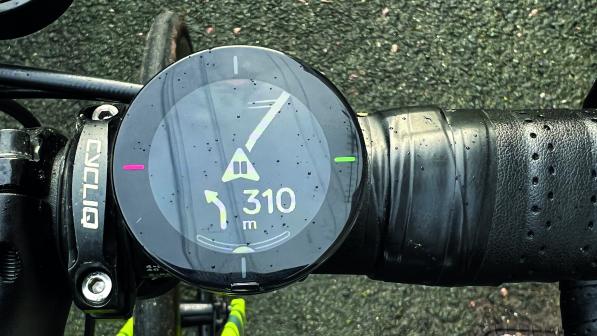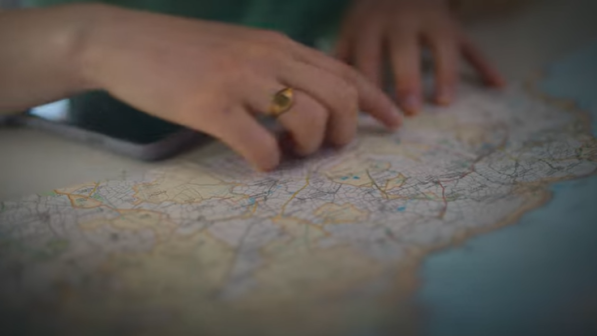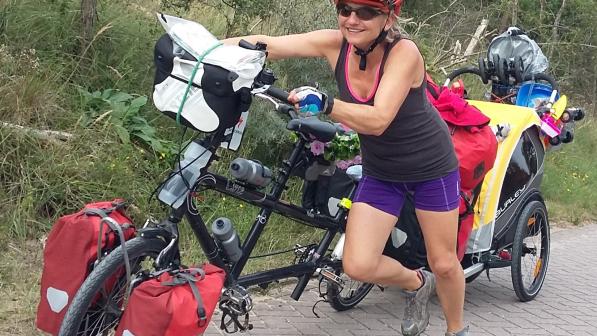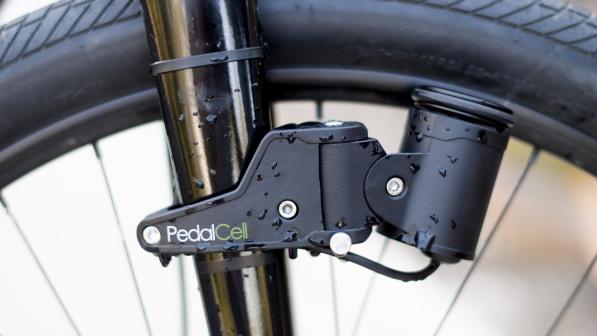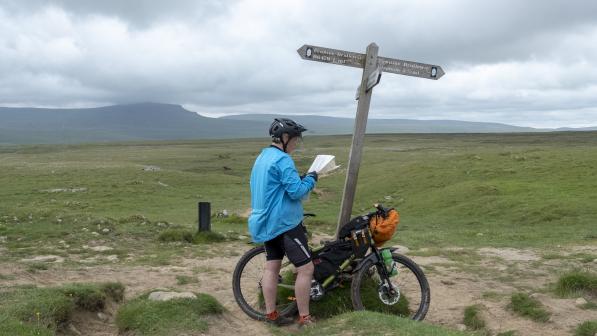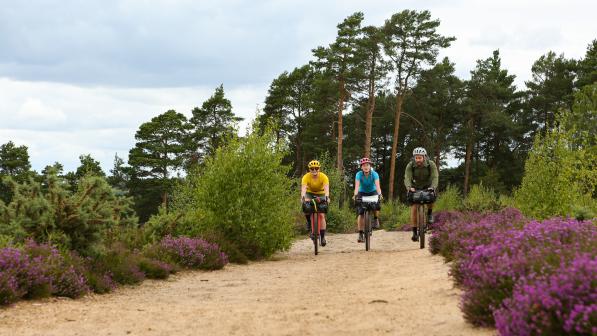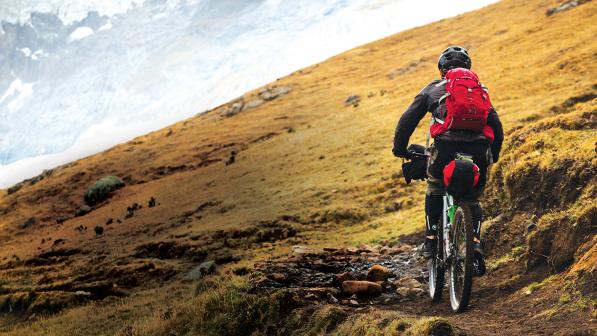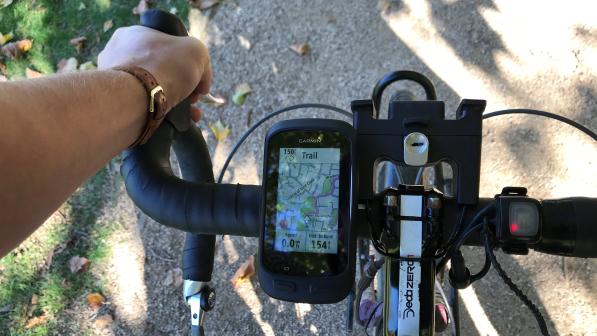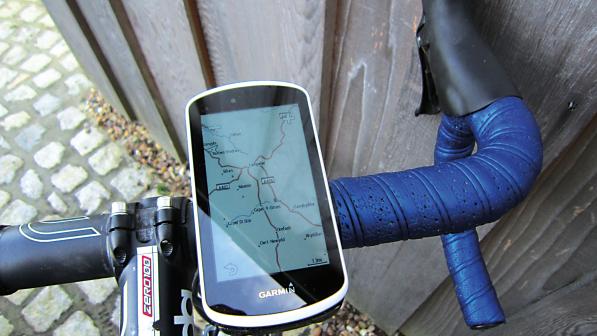How to navigate when cycling

One of the joys of cycling is discovering new places, exploring tempting hidden lanes or unfamiliar bridleways to see what awaits. Trying new routes keeps things interesting. Sometimes it’s fun to just point your wheels in whatever direction the mood takes you, but if you want to make it home on time, you’ll need to be able to figure out where you are and how to get back.
In the digital age, there are various different options for navigation on your ride. Paper maps remain the most reliable, as they don’t rely on battery life or a phone signal. Using a phone or GPS computer has the advantage of being easy to glance down at on the handlebars without having to stop, making for a smoother ride.
Paper maps
Advantages of paper maps
- Most reliable in remote areas or when camping without charging facilities
- Best for being able to see the wider area, making it easy to adapt your route on the go
- You can see your route in context and spot that interesting ruin or waterfall that you might otherwise have missed
- Specially designed maps for long-distance routes provide other useful information
Types of maps
For off-road riding, Ordnance Survey maps are the most detailed and accurate for showing rights of way, other access routes, and terrain. 1:50k Landranger maps are the best scale for off-road cycling, although if you’re doing a longer on-road tour you can just about get away with a 1:250k overview map which shows all the lanes. Taking out the relevant pages of a road atlas can also work well for touring.
There are lots of specific cycle maps for popular areas and routes, the best-known being Sustrans maps. These are a good scale for cycling, and show slightly less detail than OS maps so they are quick to look at on the go. They might also have useful extra information about cycle shops and places of interest along the route.
Tips for map reading
It can be cumbersome to keep unfolding a large map, especially if the weather is wet or windy. One solution is to print off A3 or A4 sheets of the areas you ride most regularly from the OS maps website, so you can just fold it up and stick it in your pocket. You can also buy map cases that sit on your handlebars.
Cycling UK members receive a 20% discount off the annual 12-month OS Maps premium subscription and paper maps.
If you get completely lost and don’t know where you are (it happens!), try to find a junction and look at the shape and direction of the roads or paths. If there is a signpost, you can use the names of nearby villages to work out which junction it is.
Find a spot clear of hedges and trees where you can see the shape of the land around you. How high up are you? Can you see a river or major road as a reference point and judge how close you are to it?
This is where it’s useful to have your phone as a back-up, just to confirm where you are so you can carry on your way.
If your route takes you across open moorland or through dense forest where you could lose your bearings, it’s worth carrying a compass with you as well. If you’re not sure which direction you’re facing, line up the vertical lines on your map with the north arrow on the compass to reorientate yourself.
Remember, your metal frame may affect the magnetism of the compass, so don’t hold it right next to your handlebars.
Phone apps
Advantages of phone apps
- Turn-by-turn navigation
- It’s a good way to try out GPS navigation without investing in a bike computer
- You can usually plan your route using the web version of the app and then view it on your phone without having to transfer a file to a separate device
- If you need to modify your route while riding, you can get an idea of the distance
- For long-distance tours, it’s more portable than carrying multiple maps
Types of navigation apps
There are lots of different options available, with various features. Some only offer turn-by-turn navigation as a premium feature. Look for apps that enable you to download maps or routes offline, so you don’t end up staring at a blank screen when you lose signal.
cycle.travel is a route planning tool that aims to find the most enjoyable bike route, focusing on quieter roads, better scenery as well as providing clear directions.
RideWithGPS has an easy-to-use web route planner, and your route will then appear straight in the app on your phone.
Komoot is a popular route-planning tool which will suggest routes for you based on your preferred criteria and routes that other people nearby have plotted. Again, you can then open it straight in the app. Cycling UK members can try out a free region map bundle.
OSMAnd and Maps.Me are navigation-only apps; they don’t have a website you can use for route plotting, so that does add an extra step to download your route file and import it into the app. Both have good detailed background mapping, and you can download map regions offline. Organic Maps is very similar to Maps.Me, but has a cleaner interface without adverts.
Maps.Me and Organic Maps have the advantage that you can download unlimited regions for free – the only slight complication is they use KMZ files rather than GPX, so once you’ve plotted your route you’ll need to convert it using a tool like GPS Visualizer. If you email the KMZ file to yourself, open the email on your phone and tap the file, it should open straight in the app and appear on the map.
OutdoorActive and OS Maps enable you to take detailed OS mapping with you on your phone once you pay for it. With OutdoorActive you pay to download areas of map, whereas with OS Maps a premium subscription gives you access to maps of the whole country. Both apps will display your route on the map but don’t offer turn-by-turn navigation.
Tips for navigating with a phone
There are two ways to navigate using phone apps. If the route is fairly simple or you know the area well, you can keep the phone in your pocket and just stop and check it occasionally like a paper map.
If it’s a new route with lots of turns, you might want to mount the phone on your handlebars and use satnav-style navigation – just be aware that this will drain the battery keeping the screen on all the time, especially if you’re also using an app like Strava to track your ride at the same time.
A compromise battery-wise is to temporarily disable the PIN or screen lock on your phone during your ride, so you can mount it on your handlebars and just press one button to turn the screen on and off when you’re approaching junctions to check which way you're going.
GPS computers
Advantages of GPS computers
- Turn-by-turn navigation
- More rugged than a smartphone with a longer battery life, will last for long rides
- Records your ride stats as well as navigating
- Buttons are easier to use than a touch screen if you’re wearing gloves or it’s raining
Types of GPS computers
There is a lot of variation in function and price, so do your research. Consider the size and resolution of the screen – if you mainly ride on road, a simple map with a breadcrumb trail for your route can suffice, but if you’re venturing off the beaten track, you might want the ability to see more of a map. Our GPS computer group test gives an idea of what to look for.
Most bike computers will also record stats from your ride such as distance, speed and ascent. If you really love your numbers, some also link with external sensors such as a heart rate monitor or cadence sensor.
Tips for navigating with a GPS computer
Once you’ve planned your route, you’ll need to get it onto the device. Many GPS computers will sync with an app on your phone, or you can plug it into your PC to transfer the file across. Have a look at our guide to GPS and route plotting for more advice.
